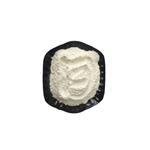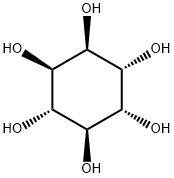Inositol, myo-inositol & D-chiro-inositol
Nov 22,2023
Introduction
Inositol has been used as a supplement in treating several pathologies, such as PCOS, metabolic syndrome, and gestational diabetes[1]. Both Myo-inositol and its isomer d-chiro-inositol showed insulin-mimetic effects in conditions of insulin resistance.
Inositol
Inositol is categorized as a B vitamin (sometimes called Vitamin B8). However, it is a form of sugar with antioxidant properties that naturally occurs within our bodies and is also found in some common foods.
Inositol is a sugar made in the body and found in foods. Inositol might balance certain chemicals in the body to help with mental conditions such as panic disorder, depression, and obsessive-compulsive disorder. It also helps insulin work better. Inositol found in prokaryotes is mainly committed to preserving physiological osmolarity values and a correct acid–base balance.
It can be found in nine forms(cis-, epi-, allo-, myo-, neo-, scyllo-, L-chiro-, D-chiro-, and muco-inositol). Stereoisomers are natural molecules with the same formula, meaning numbers of the same kinds of atoms but differ in chemical and physical properties. These nine different types are found in the plasma lipoproteins, in the phospholipids of cell membranes, and as phosphate in the cell nucleus. Myo-inositol and D-chiro-inositol are most common in supplements.

Myo-inositol
Myo-inositol (myo-Ins) is a natural polyol, the most abundant among the nine possible structural isomers in living organisms. This compound is found naturally in beans, fruit, nuts, and grains. Myo-Ins are obtained from external sources (food) and produced by a biosynthetic pathway departing from glucose (Glu) and glucose-6-phosphate.
Myo-Ins constitute the building block of several derived inositol phosphates (InsPs), complex macromolecules such as phosphatidyl inositol (PI), its seven derived phosphoinositides (phosphatidyl inositol phosphate, PIP), and the glycosylphosphatidylinositol-anchored proteins (GPI) that are mostly localized on cell membranes. Myo-inositol can be converted into D-chiro-inositol under the enzymatic activity of tissue-specific epimerases.
D-chiro-inositol
D-chiro-inositol (D-chiro-Ins) is produced from myo-inositol. A part of Myo-inositol is converted into D-chiro-inositol by the epimerase enzyme. This compound is found in the highest concentrations in the tissues that reserve glycogen — the liver and fat.
D-chiro-Ins enhance glycogen synthase activity, and D-chiro-Ins availability is remarkably increased in tissues with large glycogen deposits, such as the liver or skeletal muscle. It was observed that D-chiro-Ins directly regulate steroidogenic enzyme genes in human granulosa cells, reducing the mRNA expression of both aromatase and cytochrome P450 side-chain cleavage genes in a dose-response fashion.
Difference and connection
The tiny difference between the two forms allows each to play a completely different role in signaling insulin and other physiological pathways in our bodies. Myo-inositol helps the transporters' activation and the body's use of glucose while d-chiro inositol is involved in glycogen synthesis and storage. Naturally, our bodies take myo-inositol and convert a portion of it into d-chiro inositol[2].
D-chiro-ins have been observed to favor the transduction of insulin signals and modulate androgen release while inhibiting aromatase synthesis in the ovary. On the contrary, myo-Ins mainly promotes both FSH responsiveness and aromatase synthesis. While D-chiro-ins likely exert their effect by themselves or, ultimately, through inositol phosphoglycan (IGP-P), myo-ins are the starting block of several relevant metabolites that display many biological functions. In particular, myo-Ins and D-chiro-Ins may exert their insulin-sensitizing effect, decreasing insulin requirements. Patients with insulin resistance have been treated with myo-Ins, D-chiro-Ins, or a combination of the two.
References
[1] Basilio, Pintaudi , D. V. Giacoma , and B. Matteo . "The Effectiveness of Myo-Inositol and D-Chiro Inositol Treatment in Type 2 Diabetes." International Journal of Endocrinology 2016(2016):1-5.
[2] Mariano Bizzarri. “Myo-Inositol and D-Chiro-Inositol as Modulators of Ovary Steroidogenesis: A Narrative Review.” Nutrients 15.8 (2023).
- Related articles
- Related Qustion
Propitocaine hydrochloride is a local anesthetic that blocks nerve impulses, providing temporary pain relief during various medical procedures.....
Nov 22,2023APIThe Lewis structure of carbonic acid(CH2O3) is made up of one carbon (C) atom, three oxygen (O) atoms and two hydrogen (H) atoms.....
Nov 22,2023APID-chiro-inositol
643-12-9You may like
- The structure and Biological function of Cytochrome C
May 17, 2024
- Is CJC-1295 DAC same as CJC-1295?
May 16, 2024
- Botulinum toxin and Botulinum toxin A
May 16, 2024
D-chiro-inositol manufacturers
- D-chiro-inositol
-

- $36.00/ kg
- 2024-05-16
- CAS:643-12-9
- Min. Order: 1kg
- Purity: 99%
- Supply Ability: 5000kg/week
- D-chiro-inositol
-

- $6.00 / 1kg
- 2024-05-09
- CAS:643-12-9
- Min. Order: 1kg
- Purity: More than 99%
- Supply Ability: 2000KG/Month
- D-chiro-inositol
-

- $6.00 / 1KG
- 2024-04-22
- CAS:643-12-9
- Min. Order: 1KG
- Purity: More than 99%
- Supply Ability: 2000KG/MONTH




